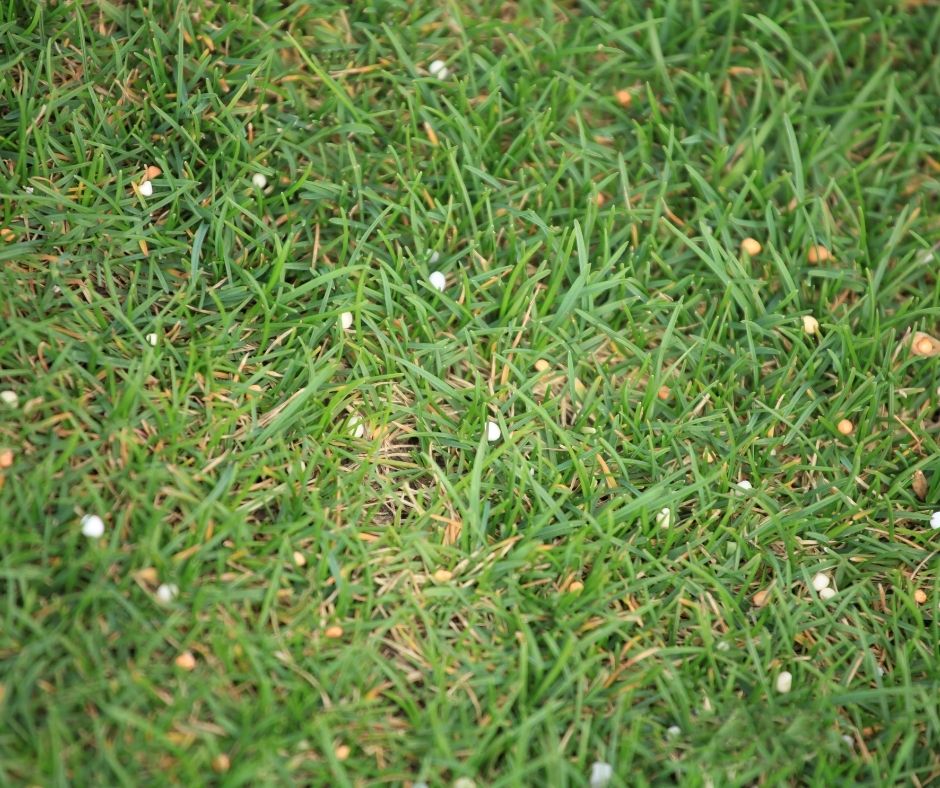Fertilize your lawn periodically, following and respecting the growth cycle of your turf.
Does it seem easy to put like that?
It certainly is!
So, let’s dig deeper now into the subject.
Most people we meet think spring is the season when you have to boost your turf.
They are right.
However, beyond spring, it is unclear what to do next in most people’s minds. Most questions we receive are:
- Should I focus during springtime only?
- Do I have to fertilize every month?
- If we have a hot summer, should I increase the number of fertilization?
- Should I schedule fertilization for spring and fall only?
The truth is that there are multiple applications for a year. In fact, keep three distinct periods in mind:
- Easter
- Labor Day
- Halloween
In other words, fertilize your lawn mid-spring, late summer, and late fall.
Here’s why.
The Sacred Rules to Fertilize Your Lawn
If you remember the movie Gremlins from 1984, there were a few rules that the hero was supposed to observe to avoid his little mogwai multiplying into many horrible creatures.
There are rules for lawns too.
If you observe them, you will avoid wreaking havoc on your property.
So let’s highlight two simple rules to keep in mind:
- Avoid fertilizing your lawn when it’s too hot or dry to avoid the spread of diseases.
- Never fertilize on frozen ground to avoid your fertilizer to be washed away by rain or wind. Always fertilize on softer ground.
Some of our clients are astonished to see on our fertilization programs that we will be on their yards late fall. Most of them think that lawn care companies start their hibernation around that time.
Well, not really.
Why Fertilize Your Lawn Late Fall?
So, why should you fertilize your lawn late fall when nature is winding down before the winter?
The reason is straight forward:
You set yourself up for success for the following year.
If you’ve done fall aeration and late fall fertilization:
- You prepare your lawn for a great winter. Your fertilization in late fall will offer the energy needed by the roots of your lawn’s plants. During late fall, plants will store anything they can to pass the winter. Do not think that nothing happens underground during these periods. Fall and winter may look quiet on the surface, but there is activity at the root system level. Just like animals preparing for the winter, your turf does the same thing. So give your lawn what it needs to have the extra energy reserve.
- You ensure that your lawn will just need a kick start in spring to thrive and not an entire makeover. Ultimately, late-fall fertilization can save you some hard-earned dollars the following year.
What Can You Use to Fertilize Your Lawn?
Let’s start with what you should not do.
Do not apply the same fertilizer on Easter, Labor Day, and Halloween.
Although we will discuss the different types of fertilizer and preparations in a separate blog, remember that your lawn does not need the same stuff all the time.
The rule here is simple:
Think about yourself.
Except for bacon, you do not want to eat the same stuff because you need different nutrients at different times of the day, depending on your activity and condition.
The same needs apply to your turf.
If your turf needs more instant power, use a fast-release fertilizer. If your lawn is preparing for a long winter, try to use a slow-release fertilizer for your late-fall application. For the latter, it’s usually the one with higher nitrogen content.
As we are approaching the late-fall season, here’s an additional tip.
Your last fertilizer application is an important one. Therefore, approach it with care and attention.
The type of fertilizer aside, this last application needs to be evenly spread. If you do not use a lawn care company to apply your late-fall fertilizer, try to rent or invest in professional equipment.
We use a walk-behind spreader, and for a good reason: They have a flow-rate dealer to release a precise amount of fertilizer per square foot. Hence, you spread the right amount of fertilizer on the lawn area you need to cover.
We’ve seen too often homeowners take a hand full of granules and throw them on the ground or use a flow-rate dealer but using too much fertilizer.
Remember that an excess of fertilizer is not good and will be detrimental to your lawn.
By all means, avoid patches of excess fertilizer in one area of your yard. A good practice is to read the instructions on the fertilizer package before starting. Fertilizer producers always offer the volume of fertilizer to be used per square foot.
If it is the first time you use a flow-rate dealer, get acquainted with the material first and the way it spreads fertilizer. Before hitting your lawn, try to test on your driveway, and once you are ready, you are good to go on your lawn.
What Have We Learned?
Fertilize your lawn at specific times of the year, and always think about your particular turf needs.
Depending on the time of the year, you need to vary your fertilizer formulation. Watching weather forecasts is essential. Your soil should not be too hard or weather too hot or dry.
Never miss your late-fall fertilization. If fall is well prepared, you set yourself for success for next spring. Your turf’s plants will need and store energy in the root system. However, it is essential to offer the right fertilizer volume and not spread it over your lawn in excess.
Stay connected with us if you want to learn more about fertilizer preparation.


